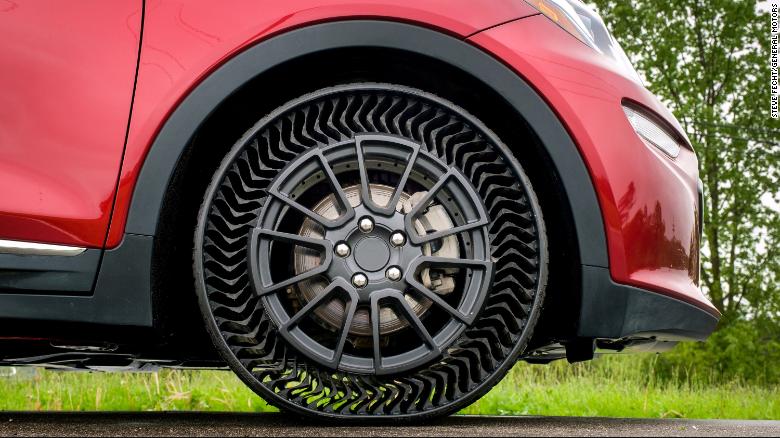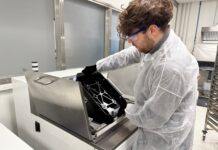
GM and Michelin are partnering up to prototype the new Unique Puncture-proof Tire System (Uptis), airless tires which will be tested on GM’s Bolt electric car in Michigan. While Michelin already offers an airless tire-wheel combo for off-road applications called Tweel, Uptis is the first of its kind for passenger vehicles.
It’s a puncture-proof tire system featuring complex internal architecture that eliminates the need for compressed air to support the car’s weight. With treads in the middle and no traditional sidewalls, the tire carries its load at the top via newly developed resin-embedded fiberglass that’s patented by Michelin. Uptis has a maximum speed of 130 miles per hour and a maximum load of 1,102 pounds per tire.
The benefits of airless tires are many: No more sudden blowouts at high speed, no more need for a spare. While the tread life is theoretically the same as a standard tire, always driving with the right tire pressure means better fuel economy. Uptis tires are so durable, in fact, that Michelin claims they will require almost no maintenance, pressure checks or adjustments. Helping to decrease the amount of rubber and raw materials to produce tires means more sustainable production, too.
The companies plan to put Uptis wheels in motion commercially as early as 2024.


















